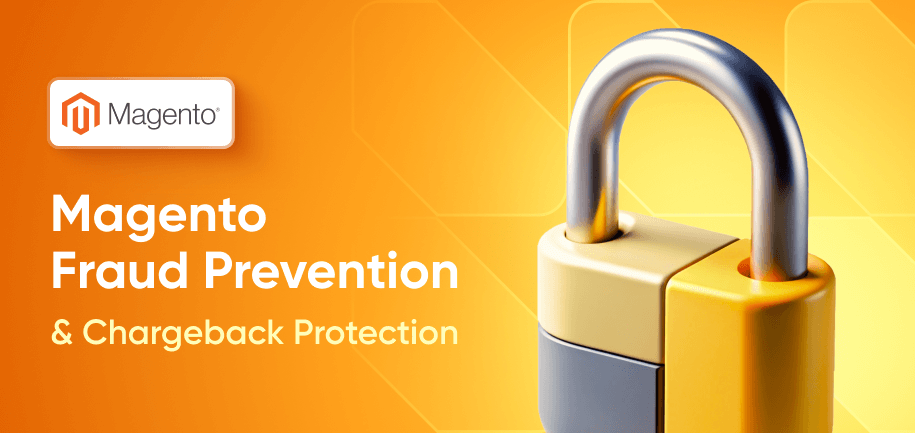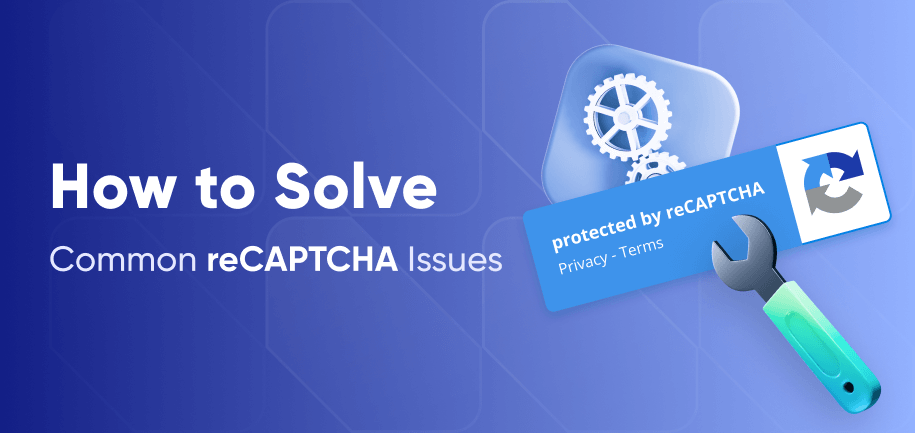Magento’s flexibility is a double-edged sword: it enables deep customization, but also opens the door to vulnerabilities if not properly managed. Fraudulent transactions can damage customer trust, lead to financial losses, and increase operational overhead. Even a few chargebacks or false declines can hurt both your revenue and reputation.
This guide explores how Magento merchants can detect, prevent, and respond to fraud more effectively using a combination of native features, third-party extensions, and modern SaaS integrations.
Types of Anti-Fraud Magento Activities
Before diving into tools and tactics, let’s distinguish between some commonly used (and often misunderstood) terms:
Magento Fraud Detection focuses on identifying potentially fraudulent behavior or transactions in real-time. Tools in this category often rely on scoring systems, rule-based logic, or AI to flag high-risk orders and email addresses.
Magento Fraud Prevention refers to proactive measures designed to stop fraudulent activity before it happens. This includes blocking possibly fraudulent orders, verifying identities, and setting up transaction rules.
Fraud Protection is a broader term used to describe both prevention and detection strategies. It often involves automated systems that work together to reduce fraud risk across your store.
Finally, Magento Chargeback Protection refers specifically to services or systems that help merchants avoid chargeback fees. Some solutions offer chargeback guarantees, meaning they’ll reimburse you if a fraudulent transaction slips through.
Magento supports all of the above, but the effectiveness depends on how you implement and customize your fraud management approach.
Best Practices for Magento 2 Fraud Protection
Protecting your Magento store from fraud requires more than a single extension or tool. A layered approach that combines automation, manual review, and strategic policies is essential.
1. Implement Rule-Based Thresholds
Create custom rules for high-risk scenarios, such as large orders, mismatch between billing/shipping countries, or use of disposable email domains. Use fraud scoring systems to apply consistent logic across these rules.
2. Enable Verification Features
Activate AVS (Address Verification System), CVV checks, and 3D Secure where available through your payment processor. These add friction only to risky transactions and improve chargeback dispute success rates.
3. Monitor and Update Blacklists
Keep a regularly updated list of suspicious IP addresses, email domains, and phone numbers. Consider tools that can auto-update blacklists based on confirmed fraud cases.
4. Protect Admin and Customer Accounts
Implement Two-Factor Authentication (2FA) for store admins and encourage customers to use strong passwords. Modules are available for enforcing these protections natively in Magento.
5. Audit Regularly
Set up monthly or quarterly fraud reviews. Monitor metrics such as fraud rate, chargeback rate, false positive rate, and approval rate to fine-tune your systems.
Magento Chargeback Protection Strategies
Chargebacks are not only costly but also difficult to contest, especially in card-not-present transactions common in e-commerce. Magento store owners must adopt proactive chargeback protection measures that work hand-in-hand with fraud detection systems.
The most common chargeback reasons include:
Fraudulent transactions (unauthorized use of card)
Item not received (delivery disputes)
Duplicate or incorrect charges
Each requires a different mitigation strategy.
1. Use Chargeback Guarantee Services
Solutions like Signifyd offer chargeback protection with reimbursement guarantees if fraud slips through their system. These platforms take full liability for approved orders, removing the merchant’s financial risk.
Benefits include:
Reduced manual review overhead
Predictable loss prevention
Higher approval rates without increasing fraud exposure
2. Automate with Clear Dispute Evidence
Whether you use a chargeback guarantee provider or not, automation can help you respond to disputes faster. Tools should help you capture and store:
Order confirmation details
Shipment tracking data
Customer communication logs
Screenshots or proof of digital delivery
3. Customize Thresholds Based on Risk
You may choose to only enable chargeback protection for high-value orders or specific regions where fraud is more common. This helps control costs while still reducing risk.
Balancing Security and UX
Fraud prevention must be effective, but not at the cost of the customer experience. Striking the right balance ensures that good customers aren’t blocked or delayed while fraudsters are stopped efficiently.
Avoid Overblocking
False positives can frustrate genuine customers and lead to lost revenue. Use scoring systems instead of hard blocks wherever possible. For example, hold high-risk orders for review instead of automatically canceling them.
Minimize Friction at Checkout
Use background verification tools such as:
Device fingerprinting to assess risk silently
Behavioral analytics to detect bots or anomalies
3D Secure 2.0, which adds a dynamic step-up challenge only when needed
These techniques reduce fraud without adding friction for low-risk users.
Build Trust with Transparency
Let customers know your store uses fraud protection to safeguard their data and purchases. A simple message like “This transaction is protected against fraud” during checkout can boost trust and reduce cart abandonment.
Magento Fraud Prevention Tools & Services
Amasty offers a suite of purpose-built extensions and services that work together to help Magento merchants protect against fraud, unauthorized access, suspicious actions, and regulatory non-compliance.
Amasty Google Invisible reCAPTCHA for Magento 2
Prevent bots and automated scripts from placing fake orders, submitting spam forms, or triggering fake login attempts – without adding friction for real users. Amasty’s Invisible reCAPTCHA protects key store areas (login, registration, contact forms, newsletter sign-ups, etc.) using Google’s seamless, behavior-based CAPTCHA technology.
Two-Factor Authentication (2FA) for Magento 2
Secure admin accounts with Amasty’s 2FA extension, which requires a second verification step for all backend logins. With multi-factor authentication for Magento admins, you significantly reduce the risk of credential-based attacks and unauthorized access to sensitive customer and order data.
Magento Security Patch Installation Service
Don’t leave your store exposed due to unpatched security gaps. Amasty’s Security Patch Installation Service ensures all official Magento patches are correctly applied and verified, protecting your store from known vulnerabilities, exploits, and malware injections. This service includes patch application, compatibility checks, and post-installation testing for safe deployment.
Managed Security Service for Magento
Get continuous, hands-on protection with Amasty’s Managed Security Service. This end-to-end solution includes 24/7 monitoring, malware scanning, vulnerability detection, patch management, and expert response to security threats. Ideal for growing merchants who want proactive defense without managing it in-house.
Magento Code Audit Service
Uncover hidden vulnerabilities, outdated code, and unsafe customizations with Amasty’s professional code audit. This service provides a detailed review of your store’s codebase, highlighting security risks, coding standard violations, and performance bottlenecks that could open the door to fraud or data loss.
Case Study: Amasty Fixes Magento 2.4.7 Bug Before the Official Patch
When Magento 2.4.7 was released, many merchants quickly discovered a disruptive issue: the WYSIWYG editor in the Admin Panel became unstable. Fields wouldn’t save, UI elements broke, and content managers were left unable to perform basic tasks.
Although the problem affected all Magento 2.4.7 users (even those not using third-party extensions), it had a particularly serious impact on merchants using content-heavy modules. The root cause was a minor JavaScript restructuring bug introduced during Magento’s optimization updates.
Instead of waiting for an official Magento patch, Amasty’s development team responded immediately with a dedicated hotfix. Within days, they released a standalone module:
➡️ amasty/module-mage-2.4.7-fix
Merchants could install the patch via Composer or download it directly from Amasty’s GitHub repository for free. Once applied, the fix restored full WYSIWYG functionality and prevented major disruptions to category management and promotional workflows.
Final Magento Fraud Protection Checklist
To help you organize the flow of Magento fraud prevention activities, here’s a concise checklist with must-do actions:
Conduct a security audit: Identify past fraud issues and risky order patterns.
Rely on tools and services: Install extensions and request security services if you don't have an in-house development team.
Configure risk rules: Customize thresholds and filtering logic (AVS mismatches, disposable emails, etc.).
Enable verification mechanisms: Turn on AVS, CVV, and 3DS via your payment gateway.
Whitelist and block IPs: Maintain accurate blacklists and whitelists through active monitoring.
Integrate SaaS for high-risk protection: Consider Riskified, Signifyd, or Kount for chargeback defense.
Train your team: Develop protocols for manual review and dispute handling.
Perform regular audits: Monitor false positives, fraud trends, and chargebacks to adapt your rules.
Use automated evidence capture: Store confirmation, shipment, and communication details to support disputes.
Maintain security hygiene: Keep Magento core, extensions, and server environment up to date; schedule regular scans.
Frequently asked questions
Yes, Amasty provides powerful native tools. For advanced chargeback guarantees and fraud intelligence, you can optionally integrate SaaS platforms.
Take a layered approach: use rule-based admin reviews for borderline cases, and apply scoring logic with human oversight for flagged orders.
Monthly or quarterly reviews are recommended, especially after seasonal peaks or when growth exposes new risk patterns.






















